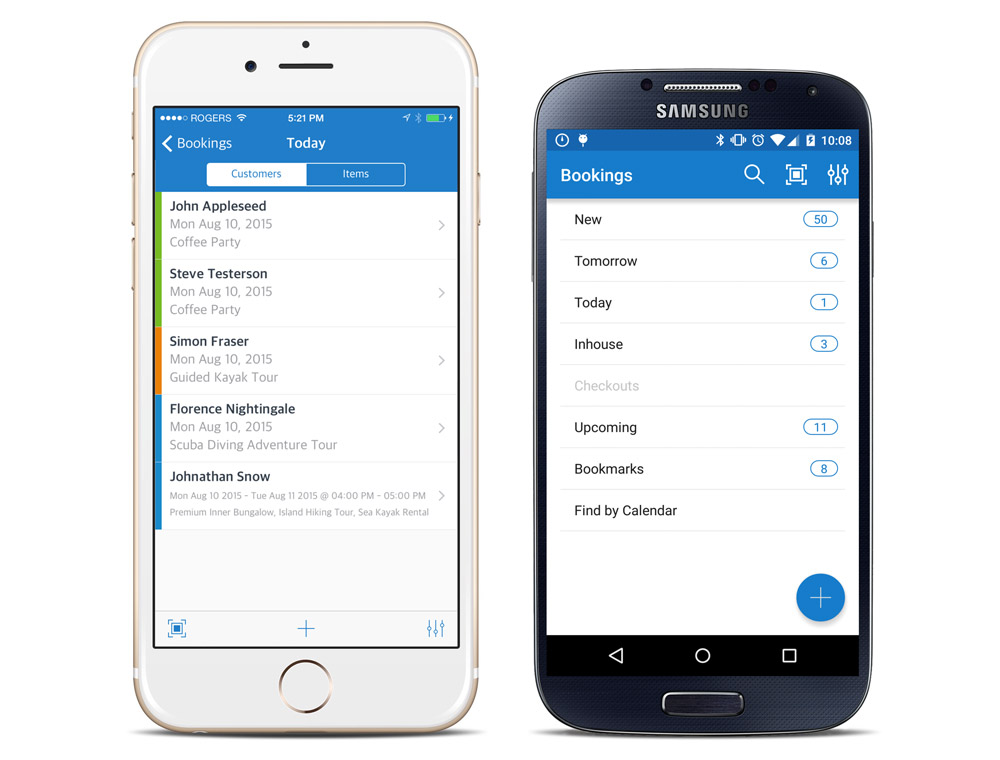Development
Building great SaaS apps
One of the best parts about doing client work is that we get to learn about many businesses. Over the years we’ve worked with companies that sell magazines, security products, medical devices, clothing, and even lamps. As interesting as all of those domains are, we’ve found that we particularly enjoy working with Software as a Service companies.
Software as a Service, or SaaS, is considered the king of business models in the tech startup world. If you can build something that provides enough value that your customers will pay a monthly subscription for it, you have a predictable and stable revenue stream. Compared to the traditional model of selling things piecemeal, it’s a really healthy way to run a business.
One example of a SaaS business we’ve worked with recently is Checkfront. Checkfront is a great platform for businesses in the hospitality industry to manage bookings, payments, and reservations. While software in this segment can be relatively user-hostile and unappealing, Checkfront’s focus on small and medium-sized businesses means the folks making purchasing decisions are also using the app. This means the customer experience matters greatly to Checkfront and their customers – just as it does to us.

Last year we took on the challenge of building entirely new Checkfront apps for iOS and Android. They had previously built basic hybrid web apps. While these helped Checkfront prove they had demand for mobile apps, it was time to deliver a polished native experience for their customers – a pattern we often see with SaaS companies.
Building on a Strong Foundation
When it comes to designing and developing mobile apps, established SaaS companies have a big head start. Their products often start out as a desktop web app, where they’ve rapidly iterated and proved out an initial customer base. That customer base is a huge asset when building out a mobile app, since it makes user research, usability reviews, and beta testing easier and more representative. SaaS users often care greatly about the products they use to get their job done, making them eager to share feedback and participate in making the software great.
Of course, these apps do have some challenges. SaaS users expect reliability and resilience – the occasional downtime or regression caused by a new OS update can tank your reviews much more quickly than for consumer-oriented apps. That means we need to stay tightly in sync with our SaaS clients when it comes to releases and API changes.
We’ve also found that SaaS apps are less useful as portfolio projects than more consumer-oriented apps are, primarily because they require a login and subscription to use. In our eyes, it’s a small price to pay for working on sustainable products.
In a world where startups constantly come and go, it’s great to build long-term relationships with companies and help them iterate and improve their product over months and years.
If you have a SaaS product that could use a great mobile app, we’d love to hear from you! If you don’t, well then maybe now’s the time to build one. 😉
Previous Post
Playing Apple Music tracks in iOS apps
Nov 22nd, 2016 | Allen Pike • Development
More on the theme of Development
Three Changes in Android 16 That Might Break Your App
Jul 16th, 2025 | Steamclock • Development
Solving Android Login Issues with Chrome Custom Tabs
May 14th, 2025 | Albert Lo • Development
Assembling The Feedback Wizard
Dec 20th, 2023 | Jenn Cooper • Development
Walk the Line: iOS Account Deletion
Dec 14th, 2022 | Nick Wilkinson • Development
Follow for more updates from Steamclock.
Archive (68) RSS Feed @steamclock